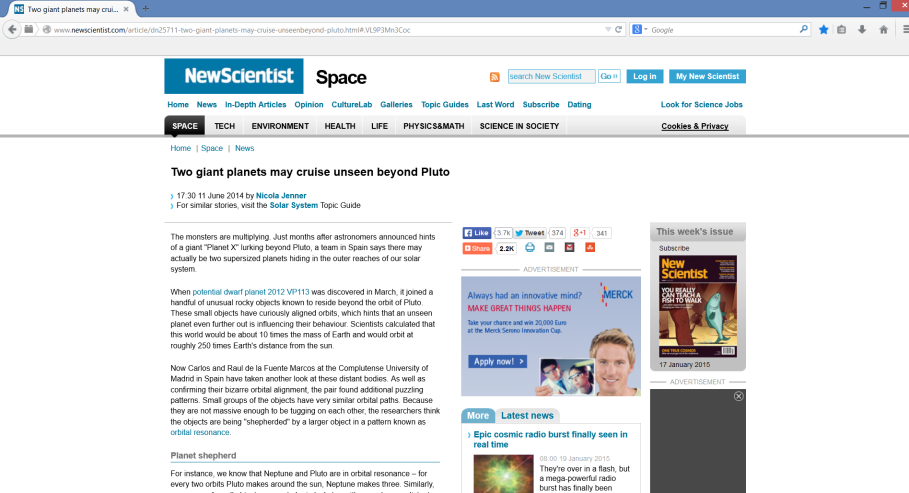Planet X May Be Out There After All
Planet X has made it to the headlines again. Planet X is the assumed massive planet that may be the cause of perturbations in the orbits of outer [dwarf] planets like Sedna.
Space news websites such as Space dot com are now publishing this research by Carlos De La Fuente Marcos and Raúl De La Fuente Marcos.
The problem is that this research paper was submitted last June 2014 by the two astronomers from the Universidad Complutense de Madrid, Spain.
Here’s a snapshot of the research paper.

Planet X Research | Extreme TNOs – De La Fuente & De La Fuente, June 2014
The following screen capture from The Cornell University Library shows that the research was submitted back in June 3, 2014 by Raúl De La Fuente Marcos. Here’s the link: http://www.arxiv.org/abs/1406.0715

Extreme TNOs Screen Capture, Raúl De La Fuente
The De La Fuente researchers think there may be at least two massive planets that would explain the presence of Sedna-like objects in the outer Solar System. Their paper was presented a few months after the discovery of probable dwarf planet 2012 VP113 by Sheppard and Trujillo in March of 2014.
Despite the “omission” of main news media and space news websites, other websites did publish about the topic immediately after the De La Fuentes presented their paper in June 2014. New Scientist article dated June 11, 2014 talks about De La Fuente & De La Fuente massive planet theory [Planet X].

New Scientist published the news June 11, 2014 on their website
Rediscovered Astronomy will publish a more extensive article to show the research to look for a massive planet has been there all the time. The search for a Planet X hasn’t been “revived” [as some space news websites say], it has been there for many decades. [Rediscovered Astronomy worked on some models for Celestia last October 2014.]
January 2015



